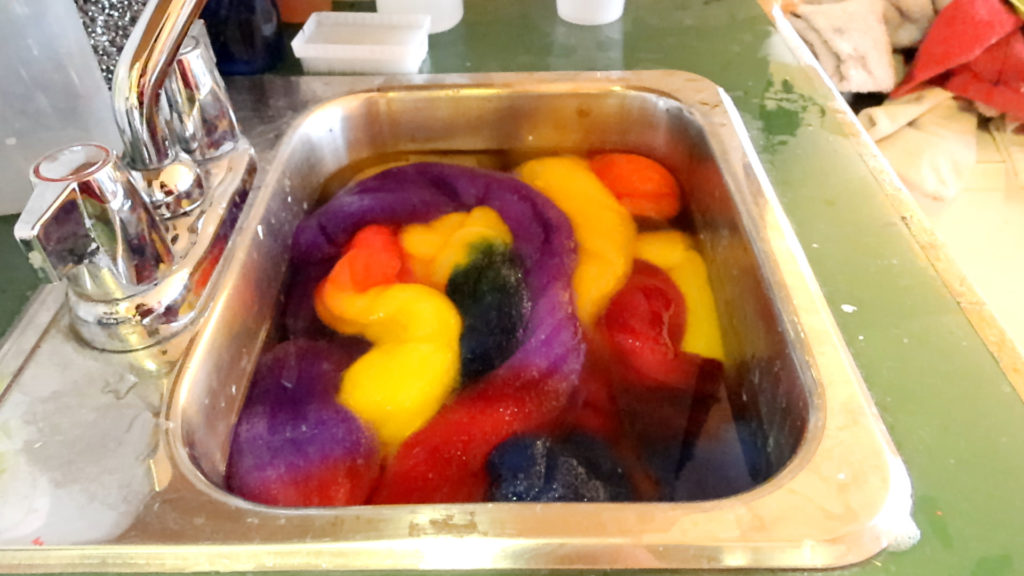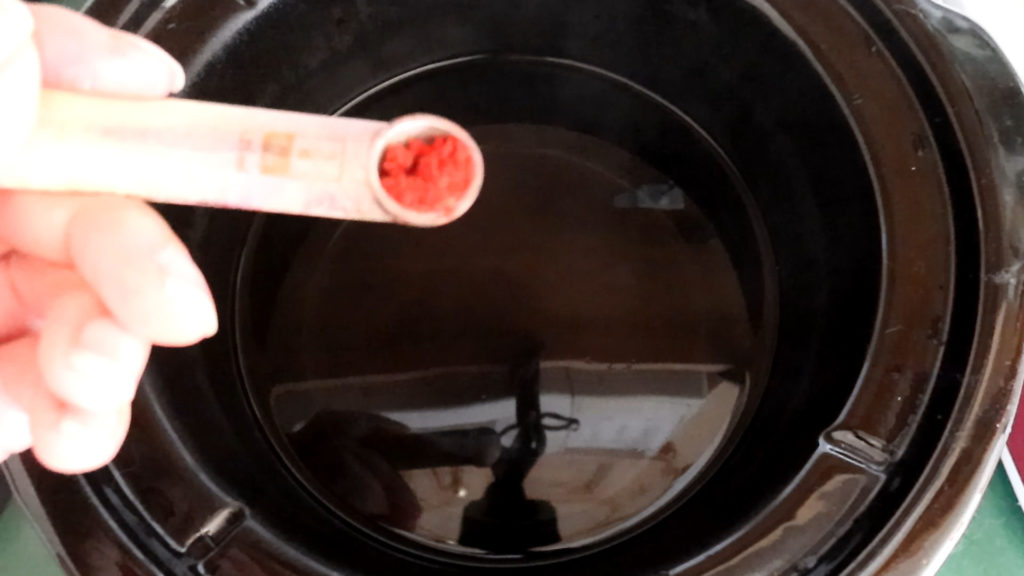My Favorite Way to Dye Roving for Spinning
This month, I decided to make a video showing how I dye roving in a crockpot. This is continuing my series on crockpot dyeing. So far, I’ve posted on dyeing yarn in a crockpot and over-dyeing yarn in a crockpot. I thought it was a natural progression to cover fiber next.
I recently received some new dye colors from G&S Dye. I was replenishing some colors that I was getting low on, and I figured I might as well get some new ones as well. These colors aren’t new to me; I have similar colors from other companies, which is why I didn’t buy them originally.
But since G&S is a Canadian company, I want to stock most, if not all, of their colors, as they are easy for me to obtain and thus economical. I like to have similar colors from different companies available in case I run out or one gets discontinued, then I have a substitute.
But first, I need samples of each color to see how they differ from those of other companies. So, why not dye roving along with my samples so I can show how I do this process step by step.
The colors are very random and very bright! I liked the spontaneity and surprise factor of just going for it and dyeing each color separately.
Watch the video below to see how I dye roving step by step:
Why Do I Dye Roving in a Crockpot
There are certainly many ways to dye roving, but here’s my top reasons for dyeing this way:
Easy and Economical to Get Started
Crockpots (AKA slow cookers) are easy to obtain at most department stores and even second-hand. I got mine originally on clearance at a big box store, but I also see them available at thrift stores. You want a crockpot that is dedicated for dyeing only. Never use one that you’d also use for food.
Besides a crockpot, you could purchase a few acid dye colors to start, or even use food coloring and Kool-Aid—but I recommend getting acid dyes designed for dyeing wool. You don’t need a ton to start, and you’ll get so much practice dyeing with even three primary colors. There are several brands of acid dyes that I use, including Jacquard, Ashford & Greener Shades. Check out your local fiber arts or yarn store for acid dyes, or online. Even Amazon sells Jacquard dyes.
Acid dyes must be set with an acid – citric acid or vinegar are the most common. You can buy citric acid in bulk online, even on Amazon. One except to this, is Country Classics dyes, which are all-in-one and don’t require an acid for a mordant.
Other than those basic things, I also recommend rubber gloves, measuring spoons, a waterproof apron, goggles, and a respirator. Tongs and bins for taking the fiber in and out of the crockpot are also helpful. Access to a sink is also a plus, but not necessary. You can always soak your fiber in plastic bins.
A soap like Synthrapol or TNA soap is great to have as well, but Blue Dawn dish soap will also do the trick for soaking after you dye roving.
Fool Proof or at least Super Forgiving
I love to use my crockpot for dyeing because I don’t have to worry about constantly watching it or even being concerned about how long the fiber is in the pot. With a fairly consistent temperature, I get a nice, even dye without the worry of burning the fiber or the house down.
If the dye is not uptaking, I can add some more boiling hot water, and check on it again in about 20 minutes. Sometimes a little extra citric acid will also do the trick to get stubborn dye to transfer into the fiber. The gift of time will give you consistent results and fully exhausted dye.
No need for pre-mixing dye or citric acid
Another reason I like this method of dyeing is that I can do so on a whim. I choose the colors as I go; no pre-mixing is required. I also put the citric acid in the pot with hot water in powdered form and then add the dye. I’m working with 1/4 teaspoon of dye for the sections in this roving for each color.
Doing one color at a time is less messy and each color stays as pure as you want
Believe it or not, I’m the type of person who doesn’t really like to get messy! As creative as I can be and as “messy” (HA HA!) as my brain can get, I do appreciate tackling tasks with order and organization. I’m the type that likes to take all the ingredients out for when I cook, but I will put those ingredients away as a go and clean along the way. I find mess and chaos challenging.
Crockpot dyeing allows me to approach one color at a time without worrying about the color getting on other parts of the roving unless I want it to. I like to overlap the colors as I dip the roving into the next color in the pot. Whenever I have pre-mixed dye and dyed roving in the dip/wrap in plastic to steam method, not only does color go where I don’t want it to, but it tends to make a mess: color dripped on the work surface, for instance. Doing one color at a time is perfect for control freaks like me. 😉
That’s not to be confused with the times I dye and want the colors to mingle together. But that’s a blog post for another day. 🙂
Cons of Crockpot Dyeing
- You need to have a crockpot exclusively for dyeing (though, as I mentioned, it is easy to obtain one relatively cheaply; at least this is the case here in Canada)
- It’s time-consuming. It is a slow cooker, after all. You are dyeing your roving low and slow. However, I would argue the time you save not pre-mixing dye may make up for this
- You can only do small amounts at a time. If you are looking to do large amounts of dyed fiber, then a large stockpot or a caterer’s steamer tray may be more to your liking.
I hope you enjoyed my video on how to dye roving using the crockpot method. In the future, I hope to cover this and many more ways to dye yarn and fiber.
Check out my Youtube for other how to spinning and dyeing videos.
I am a jewelry artist, spinner, and indie dyer in Nova Scotia, Canada, self-taught in all areas. I hope these posts help encourage and inspire you along your creative journey, no matter if you approach your craft my way or not. 🙂 Check out my About Me page for more info and the Fiber Arts/Spinning/Dyeing Category for more content like this.





